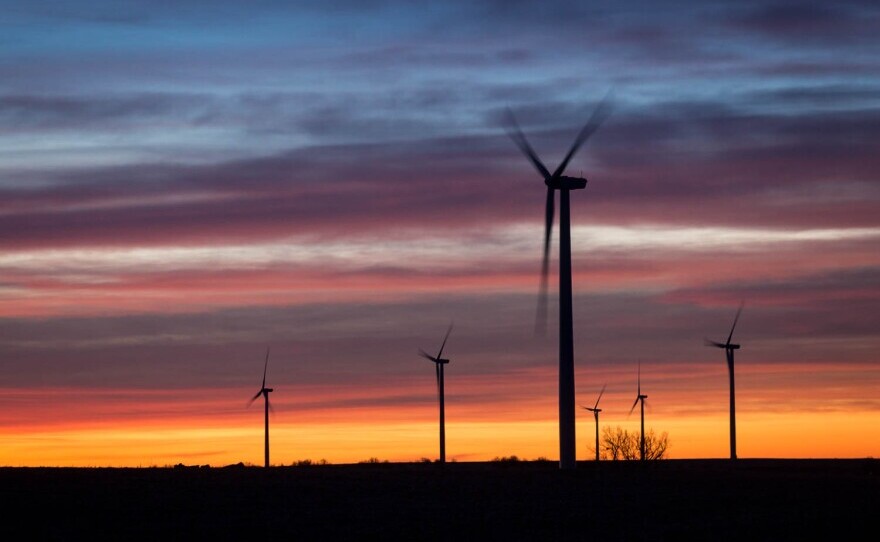KPR is launching an occasional series of essays on energy in Kansas. The series is written by a new KPR commentator, Scott Carlberg. Carlberg has spent decades working in the energy sector, as a consultant, communicator and educator. The focus of his first commentary is on wind energy, which has become the state's largest source of electricity.
Commentator Scott Carlberg has more than 40 years of experience in energy industry communications in the U.S. He's worked in corporate communications for oil, gas and electricity organizations as well as for nonprofit, research and higher education groups. He lives in Leawood.
Related: KMUW Radio series on wind energy
(Transcript)
Wind Energy Decisions Should Be a Breeze
By Scott Carlberg
You certainly are well acquainted with the winds in Kansas. We have the second windiest state in the U.S. It’s a gift, but will Kansans fully take advantage of this resource?
Wind is already beneficial for Kansas. A productive thing for clean power generation and dollars in the pockets of wind leaseholders.
Wind energy has also been debated in the Kansas legislature – whether wind energy growth can continue. But talking politics is not my aim; how technology serves Kansans is.
Last year, Kansas marked the 20th year for its first wind turbine farm. That’s in Southwest Kansas, near Montezuma. It’s 170 turbines that can power 33,000 homes. Thanks, Gray County, for opening the door.
The Kansas energy transition is already in full force. 30 of the 105 counties in Kansas have some sort of wind energy.
Wind surpassed coal in 2019 as the largest generator of power in Kansas.
Coal’s decline is not unique to our state. It's happening across the nation.
Some $48 million per year goes to wind leaseholders’ accounts. Local governments may reap more than $650 million during the life of the wind projects.
Companies with Kansas operations, like Google or Target, tap into our wind energy for their own use, and we help them meet their sustainability goals. And they employ our people. So, it's a nice bonus.
Wind technology will only improve going forward.
Turbine power out-put has grown roughly two-thirds over the years. Look for more of that in the future.
Recycling composite blades is a thorn in the side of wind power. But last year, a project started that could recycle 90% of wind blades. And it happens close-by, too – in Missouri.
Blade recycling may go by the wayside, though, as bladeless wind turbines are being researched.
Other innovations are in the offing too, like sophisticated airfoil designs that reduce blade weight and reduce noise. And you know, for a state steeped in flight like Kansas, this seems right up our alley.
Wind energy is a positive contributor. And I say that as somebody who worked two decades in the petroleum industry. There's still a need for petroleum long-term too, by the way. So, no favorites played here. .
One hitch that could hit wind - or any power generation technology – is transmission lines. Our electric grid has been called the greatest engineering feat of the 20th Century. Now, one-fifth done with the 21st Century, transmission upgrades are needed for these new power generation technologies. And transmission lines can run from a quarter million to multimillions per mile, not to mention right-of-way concerns.
In the end, decisions about placing and upgrading transmission and distribution lines may make debates about the value of wind energy seem like a breeze.
-30-



